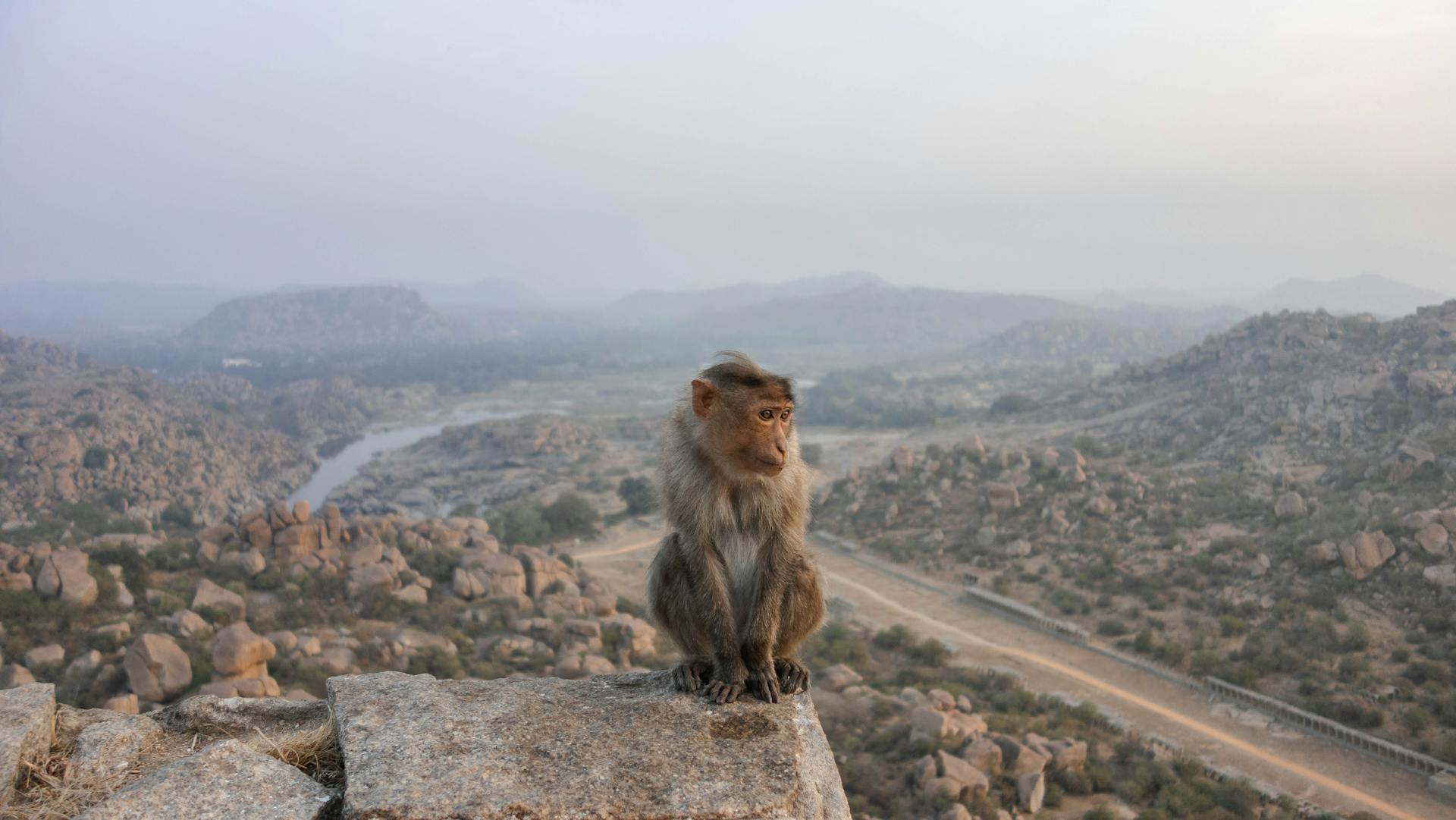The Need to Address Biodiversity Loss: Preserving Nature’s Balance

Biodiversity, the rich tapestry of life on Earth, encompasses the vast array of species, ecosystems, and genetic diversity that coexist in a delicate balance. However, this intricate web of life is under severe threat from human activities, leading to an alarming rate of biodiversity loss. This phenomenon, often referred to as the sixth mass extinction, is a pressing global issue that demands immediate attention and action.
Biodiversity loss refers to the decline or disappearance of various species, habitats, and ecosystems due to human-induced pressures. It is a complex and multifaceted problem that stems from various factors, including habitat destruction, overexploitation, pollution, climate change, and the introduction of invasive species. As species disappear, the intricate relationships and interdependencies within ecosystems are disrupted, potentially leading to cascading effects that can have far-reaching consequences for the entire planet.
The rate of biodiversity loss is staggering, with scientists estimating that species are going extinct at a rate hundreds or even thousands of times higher than the natural background rate. This rapid decline in biodiversity poses a significant threat to the Earth’s ability to sustain life and provide essential ecosystem services, such as air and water purification, soil fertility, and climate regulation.
The importance of biodiversity
Biodiversity is the foundation upon which all life on Earth depends. It plays a crucial role in maintaining the health and resilience of ecosystems, ensuring the provision of essential services that support human well-being and economic activities. The value of biodiversity extends far beyond its intrinsic worth, encompassing ecological, economic, and cultural significance.
- Ecological Significance: Biodiversity is essential for maintaining the balance and functioning of ecosystems. Each species plays a unique role in the intricate web of life, contributing to processes such as pollination, nutrient cycling, and pest control. Diverse ecosystems are more resilient and better able to adapt to environmental changes and disturbances.
- Economic Value: Biodiversity provides numerous economic benefits through ecosystem services, such as food production, water purification, climate regulation, and disease control. Many industries, including agriculture, forestry, and pharmaceuticals, rely on biodiversity for their products and processes.
- Cultural and Recreational Value: Biodiversity holds immense cultural and recreational value for humans. Many indigenous communities and traditional societies have deep connections to the natural world, and biodiversity plays a vital role in their cultural identity, traditional knowledge, and spiritual well-being. Additionally, biodiversity contributes to recreational activities, eco-tourism, and aesthetic enjoyment.
Preserving biodiversity is not only crucial for the well-being of our planet but also for safeguarding the future of humanity and ensuring the sustainability of our economies and societies.
Causes of biodiversity loss
Biodiversity loss is a complex issue with multiple interrelated causes, many of which are directly or indirectly linked to human activities. The primary drivers of biodiversity loss include:
- Habitat Loss and Fragmentation: The conversion of natural habitats for urban development, agriculture, and other human activities is the leading cause of biodiversity loss. As habitats are destroyed or fragmented, species lose their homes, food sources, and migratory routes, leading to population declines and, in some cases, extinction.
- Overexploitation: The unsustainable exploitation of natural resources, such as overfishing, overhunting, and deforestation, has led to the depletion of many species populations. This overexploitation often results from commercial interests, illegal trade, or unsustainable subsistence practices.
- Pollution: Various forms of pollution, including air, water, and soil contamination, can have devastating impacts on biodiversity. Toxic substances, such as pesticides, industrial effluents, and plastic waste, can directly harm or kill species, disrupt their reproductive cycles, and degrade their habitats.
- Climate Change: The effects of climate change, including rising temperatures, altered precipitation patterns, and extreme weather events, are placing significant stress on many species and ecosystems. As conditions change, some species may struggle to adapt or migrate, leading to population declines or even extinctions.
- Invasive Species: The introduction of non-native species into new environments can disrupt local ecosystems by outcompeting native species, spreading diseases, or altering the physical environment. Invasive species are often introduced unintentionally through global trade, travel, or deliberate introductions for various purposes.
- Human Population Growth and Unsustainable Consumption: The growing human population and the associated demand for resources, such as food, water, and energy, exert immense pressure on biodiversity. Unsustainable consumption patterns and the exploitation of natural resources beyond their regenerative capacity contribute significantly to biodiversity loss.
Addressing these causes requires a multifaceted approach that involves policy changes, sustainable practices, and a shift in societal attitudes towards the environment and natural resources.
Impacts of biodiversity loss

The consequences of biodiversity loss are far-reaching and have profound implications for the well-being of both human societies and the planet as a whole. Some of the major impacts of biodiversity loss include:
- Ecosystem Disruption: Biodiversity plays a crucial role in maintaining the stability and resilience of ecosystems. As species disappear, the intricate web of interactions and interdependencies within ecosystems can be disrupted, leading to cascading effects that can impact the entire ecosystem’s functioning.
- Loss of Ecosystem Services: Biodiversity underpins many of the ecosystem services upon which human societies depend, such as pollination, water purification, soil fertility, and climate regulation. The loss of biodiversity can compromise these essential services, potentially leading to significant economic and social consequences.
- Food Security Threats: Biodiversity is essential for maintaining healthy and productive agricultural systems. The loss of genetic diversity in crop species and the decline of pollinators and other beneficial organisms can threaten food security and agricultural productivity.
- Increased Vulnerability to Disease and Pests: Biodiversity plays a crucial role in regulating the spread of diseases and controlling pest populations. As biodiversity declines, the natural checks and balances that keep these threats in check can be disrupted, increasing the risk of outbreaks and pest infestations.
- Economic Losses: The loss of biodiversity can have significant economic consequences, particularly for industries that rely on natural resources, such as agriculture, forestry, fisheries, and eco-tourism. The degradation or loss of these resources can lead to decreased productivity, job losses, and economic instability.
- Cultural and Traditional Knowledge Erosion: Many indigenous and traditional communities have deep connections to the natural world, and their cultural identities, traditional knowledge, and spiritual practices are closely tied to biodiversity. The loss of biodiversity can lead to the erosion of these valuable cultural and traditional knowledge systems.
- Ethical and Moral Considerations: Beyond the practical implications, biodiversity loss raises ethical and moral concerns. Many people believe that all species have an inherent right to exist and that humans have a moral obligation to protect and preserve the diversity of life on Earth.
Addressing biodiversity loss is not only crucial for preserving the intricate web of life on our planet but also for safeguarding the well-being and future of human societies.
The urgent need to address biodiversity loss
The rapid pace of biodiversity loss and its far-reaching consequences have made addressing this issue an urgent global priority. Failure to take decisive action could lead to irreversible damage to the Earth’s ecosystems and the services they provide, potentially compromising the ability of our planet to sustain life as we know it.
- Ecological Tipping Points: Ecosystems are complex and interconnected, and the loss of key species or the disruption of critical processes can lead to tipping points beyond which ecosystems may collapse or undergo irreversible changes. Preventing such tipping points is crucial for maintaining the resilience and stability of our planet’s ecosystems.
- Ensuring Food Security: Biodiversity is essential for maintaining healthy and productive agricultural systems. As the global population continues to grow, ensuring food security will become increasingly challenging without preserving the genetic diversity of crops and the ecosystems that support agriculture.
- Mitigating Climate Change: Biodiversity plays a vital role in regulating the Earth’s climate and mitigating the impacts of climate change. Healthy ecosystems, such as forests, wetlands, and oceans, act as carbon sinks, absorbing and storing significant amounts of carbon dioxide from the atmosphere.
- Preserving Traditional Knowledge and Cultural Heritage: Many indigenous and traditional communities have a wealth of knowledge and practices that are deeply rooted in their connections to the natural world. Preserving biodiversity is essential for safeguarding this invaluable cultural heritage and ensuring its transmission to future generations.
- Economic Sustainability: Biodiversity underpins many economic activities, including agriculture, forestry, fisheries, and eco-tourism. Protecting biodiversity is crucial for ensuring the long-term sustainability and resilience of these industries, which contribute significantly to local and global economies.
- Ethical and Moral Responsibility: Beyond the practical considerations, addressing biodiversity loss is an ethical and moral imperative. As stewards of the planet, we have a responsibility to protect and preserve the rich tapestry of life that has evolved over billions of years and to ensure that future generations can inherit a healthy and biodiverse world.
Addressing biodiversity loss requires a concerted global effort involving governments, international organizations, businesses, civil society, and individuals. Failure to act now could have catastrophic consequences for the planet and human well-being, making it an urgent priority that demands immediate and decisive action.
Conservation efforts and initiatives
In response to the growing threat of biodiversity loss, various conservation efforts and initiatives have been undertaken at local, national, and international levels. These efforts aim to protect and preserve biodiversity through a range of strategies and approaches:
- Protected Areas: The establishment of protected areas, such as national parks, wildlife sanctuaries, and marine reserves, is a crucial strategy for conserving biodiversity. These areas provide safe havens for species and ecosystems, shielding them from human activities and allowing for their recovery and preservation.
- Species Conservation Programs: Targeted conservation programs focus on protecting and recovering specific endangered or threatened species. These programs may involve captive breeding, habitat restoration, reintroduction efforts, and measures to address the specific threats faced by the species.
- Habitat Restoration and Rehabilitation: Efforts are underway to restore and rehabilitate degraded habitats, such as forests, wetlands, and coral reefs. These initiatives aim to recreate suitable environments for native species and promote the recovery of ecosystems.
- Sustainable Resource Management: Promoting sustainable practices in sectors like agriculture, forestry, and fisheries is crucial for minimizing the impact on biodiversity. Approaches like sustainable farming, responsible forestry management, and responsible fishing practices can help reduce the strain on natural resources and ecosystems.
- Ex-situ Conservation: Ex-situ conservation involves the preservation of species outside their natural habitats, such as in zoos, botanical gardens, and seed banks. These efforts play a vital role in safeguarding genetic diversity and providing insurance against extinction for critically endangered species.
- International Agreements and Conventions: Several international agreements and conventions, such as the Convention on Biological Diversity (CBD), the Convention on International Trade in Endangered Species of Wild Fauna and Flora (CITES), and the Ramsar Convention on Wetlands, provide frameworks for global cooperation and coordinated efforts to address biodiversity loss.
- Community-based Conservation: Engaging local communities in conservation efforts is crucial for ensuring long-term success. Community-based conservation initiatives empower local communities to manage and protect their natural resources, fostering a sense of ownership and sustainable practices.
- Research and Monitoring: Ongoing research and monitoring efforts are essential for understanding the complex dynamics of biodiversity, identifying threats, and evaluating the effectiveness of conservation measures. This knowledge informs decision-making and guides future conservation strategies.
While these efforts have yielded some successes, the ongoing biodiversity crisis highlights the need for more concerted and comprehensive action at all levels, including addressing the root causes of biodiversity loss and promoting sustainable development practices.
Policies and legislation to protect biodiversity

Governments and international organizations play a crucial role in addressing biodiversity loss through the development and implementation of policies and legislation aimed at protecting and conserving biodiversity. Here are some examples of policies and legislation that have been implemented:
- National Biodiversity Strategies and Action Plans (NBSAPs): Under the Convention on Biological Diversity (CBD), countries are required to develop and implement National Biodiversity Strategies and Action Plans (NBSAPs) to guide their efforts in conserving and sustainably using biodiversity.
- Endangered Species Acts: Many countries have enacted legislation to protect endangered and threatened species, such as the Endangered Species Act in the United States and the Species at Risk Act in Canada. These laws provide legal frameworks for identifying and protecting species at risk of extinction and their habitats.
- Environmental Impact Assessments (EIAs): Environmental Impact Assessments (EIAs) are required for major development projects to evaluate their potential impacts on biodiversity and the environment. EIAs help identify potential risks and suggest mitigation measures to minimize negative impacts.
- Protected Area Legislation: Governments have established legal frameworks for the designation and management of protected areas, such as national parks, wildlife sanctuaries, and marine reserves. These laws aim to safeguard critical habitats and ecosystems from human disturbance and exploitation.
- Sustainable Forestry and Fisheries Management Policies: Policies and regulations governing the management of forests, fisheries, and other natural resources aim to promote sustainable practices and minimize the impact on biodiversity. These may include regulations on logging, fishing quotas, and restrictions on certain practices.
- International Agreements and Conventions: Several international agreements and conventions, such as the Convention on Biological Diversity (CBD), the Convention on International Trade in Endangered Species of Wild Fauna and Flora (CITES), and the Ramsar Convention on Wetlands, provide frameworks for global cooperation and coordinated efforts to address biodiversity loss.
- Incentives and Subsidies: Governments may provide incentives, such as tax breaks or subsidies, to encourage sustainable practices and conservation efforts by businesses, landowners, and communities.
- Biodiversity Offsets and Compensation Schemes: Some policies require developers or companies to offset or compensate for any unavoidable impacts on biodiversity resulting from their activities. These schemes aim to achieve no net loss or a net gain in biodiversity.
- Public Education and Awareness Campaigns: Many governments and organizations have launched public education and awareness campaigns to promote the importance of biodiversity conservation and encourage sustainable behavior among citizens and stakeholders.
While policies and legislation are essential tools for addressing biodiversity loss, their effective implementation and enforcement remain critical challenges. Collaboration between governments, international organizations, civil society, and the private sector is crucial for ensuring the success of these efforts.
Promoting sustainable practices to combat biodiversity loss
Addressing biodiversity loss requires a comprehensive approach that integrates sustainable practices across various sectors and industries. By adopting sustainable practices, we can reduce our environmental footprint and minimize the negative impacts on biodiversity. Here are some key areas where sustainable practices can contribute to combating biodiversity loss:
- Sustainable Agriculture: Promoting sustainable agricultural practices, such as organic farming, crop rotation, and integrated pest management, can help reduce the reliance on harmful pesticides and fertilizers, protect soil health, and preserve biodiversity in agricultural landscapes.
- Responsible Forestry Management: Implementing sustainable forestry practices, such as selective logging, reforestation, and the protection of old-growth forests, can help preserve biodiversity-rich habitats and maintain the ecological integrity of forest ecosystems.
- Sustainable Fisheries and Aquaculture: Adopting responsible fishing practices, such as catch limits, gear restrictions, and marine protected areas, can help prevent overfishing and protect marine ecosystems. Additionally, sustainable aquaculture practices can reduce the pressure on wild fish populations.
- Renewable Energy and Energy Efficiency: Transitioning to renewable energy sources, such as solar, wind, and geothermal power, and promoting energy efficiency can help reduce greenhouse gas emissions and mitigate the impacts of climate change, which is a significant driver of biodiversity loss.
- Sustainable Tourism: Promoting eco-tourism and responsible tourism practices can help minimize the negative impacts of tourism on sensitive ecosystems and habitats. This includes measures such as limiting visitor numbers, implementing waste management strategies, and supporting local conservation efforts.
- Waste Management and Pollution Control: Implementing effective waste management strategies and pollution control measures can help reduce the amount of harmful substances entering ecosystems and affecting biodiversity. This includes initiatives such as proper waste disposal, recycling, and treatment of industrial effluents.
- Habitat Restoration and Conservation: Engaging in habitat restoration and conservation efforts, such as reforestation, wetland restoration, and the creation of wildlife corridors, can help recover degraded ecosystems and provide safe havens for biodiversity.
- Sustainable Urban Development: Incorporating biodiversity considerations into urban planning and development can help create green spaces, protect urban ecosystems, and minimize the impact of urbanization on surrounding natural areas.
- Public Education and Awareness: Promoting public education and awareness campaigns can help raise awareness about the importance of biodiversity and encourage individuals, communities, and businesses to adopt sustainable practices and make environmentally conscious choices.
Promoting sustainable practices requires collaboration and commitment from various stakeholders, including governments, businesses, civil society organizations, and individuals. By embracing sustainable practices, we can reduce our environmental footprint, preserve biodiversity, and ensure the long-term sustainability of our planet’s ecosystems.
The role of individuals in preserving biodiversity
While collective efforts from governments, organizations, and businesses are crucial in addressing biodiversity loss, individuals also play a vital role in preserving nature’s balance. By making conscious choices and adopting sustainable lifestyles, each person can contribute to the conservation of biodiversity and the protection of our planet’s rich tapestry of life.
- Reduce, Reuse, Recycle: Minimizing waste and embracing a circular economy mindset can significantly reduce the demand for natural resources and the subsequent impact on biodiversity. Simple actions such as reducing single-use plastics, reusing and repurposing items, and properly recycling can make a tangible difference.
- Conscious Consumption: Being mindful of our consumption patterns and making sustainable choices can help alleviate the pressure on natural resources and ecosystems. This includes supporting businesses that prioritize sustainability, choosing eco-friendly products, and reducing our overall consumption footprint.
- Sustainable Food Choices: Adopting a plant-based or locally-sourced diet can significantly reduce the environmental impact of our food choices. Sustainable food production practices, such as organic farming and permaculture, can help preserve biodiversity in agricultural landscapes.
- Energy Conservation: Reducing energy consumption and embracing renewable energy sources can help mitigate the impacts of climate change, which is a significant driver of biodiversity loss. Simple actions like turning off lights, unplugging unused appliances, and investing in energy-efficient technologies can contribute to this effort.
- Responsible Travel and Ecotourism: When traveling, choosing eco-friendly destinations and responsible tourism operators can help minimize the negative impacts on local ecosystems and support conservation efforts. Engaging in activities like wildlife watching and visiting protected areas can also raise awareness and appreciation for biodiversity.
- Citizen Science and Volunteering: Participating in citizen science projects, such as biodiversity monitoring or habitat restoration initiatives, can contribute valuable data and hands-on efforts to conservation efforts. Volunteering with local environmental organizations can also make a significant impact.
- Advocacy and Activism: Raising awareness about biodiversity loss and advocating for stronger environmental policies and legislation can influence decision-makers and drive positive change. Individuals can participate in campaigns, sign petitions, and engage with their elected representatives to promote biodiversity conservation.
- Environmental Education: Educating ourselves and others, particularly younger generations, about the importance of biodiversity and sustainable practices can foster a deeper appreciation for nature and inspire long-term behavior change.
- Community Engagement: Collaborating with local communities and supporting indigenous and traditional knowledge systems can help preserve biodiversity and promote sustainable practices that have been developed over generations of harmonious coexistence with nature.
Join the movement to preserve biodiversity by making conscious choices in your daily life. Reduce your environmental footprint, support sustainable businesses, and advocate for stronger policies to protect our planet’s rich tapestry of life. Together, we can ensure a future where biodiversity thrives, ecosystems remain resilient, and nature’s balance is maintained for generations to come.
Preserving biodiversity is not only an environmental imperative but also a moral and ethical responsibility. By embracing sustainable lifestyles and collective action, individuals can play a crucial role in addressing the biodiversity crisis and ensuring a thriving, biodiverse planet for the future.
Conclusion: Taking action to preserve nature’s balance
The biodiversity crisis is a complex and multifaceted challenge that requires urgent and concerted action from all sectors of society. As we have explored, the loss of biodiversity has far-reaching consequences that extend beyond the realm of the environment, impacting our economies, food security, cultural heritage, and the very foundation upon which human societies depend.
Addressing this crisis necessitates a comprehensive approach that integrates conservation efforts, policy interventions, sustainable practices, and individual actions. Governments, international organizations, businesses, and civil society must work together to develop and implement effective strategies to protect and restore biodiversity.
Strengthening protected area networks, implementing sustainable resource management practices, and promoting biodiversity-friendly policies and legislation are crucial steps in this endeavor. Additionally, investing in research, monitoring, and public education can deepen our understanding of the biodiversity crisis and foster a greater appreciation for the value of nature.
However, the responsibility for preserving biodiversity does not solely rest on governments and organizations. Each individual has a vital role to play in this collective effort. By adopting sustainable lifestyles, making conscious consumer choices, and actively participating in conservation initiatives, we can collectively reduce our environmental footprint and contribute to the preservation of our planet’s rich tapestry of life.
Ultimately, addressing the biodiversity crisis is not only an environmental imperative but also a moral and ethical responsibility. We have an obligation to future generations to safeguard the natural heritage that sustains life on Earth and to ensure that our children and grandchildren can inherit a world teeming with the wonders of nature.
The time to act is now. By working together, embracing sustainable practices, and fostering a deeper appreciation for the intricate web of life that surrounds us, we can preserve nature’s balance and secure a future where biodiversity thrives, ecosystems remain resilient, and the beauty and wonder of our planet’s biodiversity continue to inspire and sustain us for generations to come.




